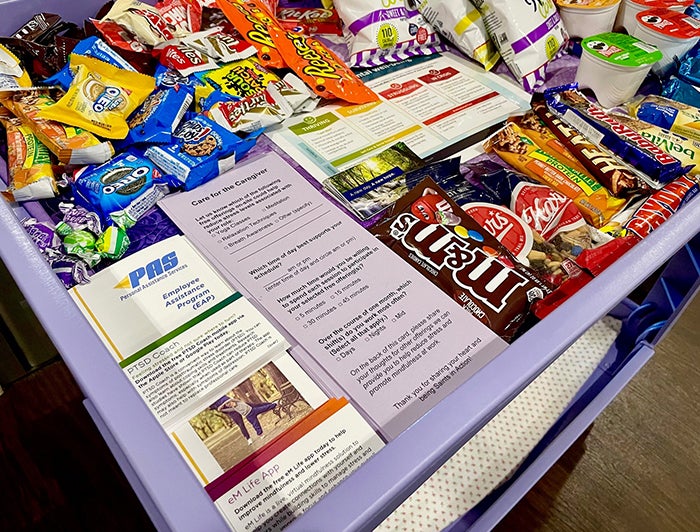Prioritizing the Mental Health of Health Care Workers

Most people who have worked in health care are familiar with the “second victim” concept. It’s based upon the idea that the first victim of any trauma is the individual who suffers the more immediate, more perceptible effects of a given event, such as a vehicle collision or a severe case of COVID-19. The second victim, then, is the health care worker who responds to the aftermath.
The latter individuals – often called to their careers in the first place by an empathetic nature – are those who are there when something goes wrong in the middle of the night, who coordinate “good-bye” calls and who passionately care for patients and their families.
Larry Phillips, Diplomat of Clinical Social Work and program manager at SSM Health St. Anthony Hospital, Oklahoma City, an acute care facility and Oklahoma’s largest provider of mental health services, first learned of the “second victim” concept at a luncheon hosted by the Joint Commission. The Joint Commission representative explained that the second victims experience burnout, guilt, feelings of failure and lack of control. In serious cases, suicidality could be a risk.
Phillips recognized a need to address this in his own health ministry and, after researching the topic, found the Cleveland Clinic’s Code Lavender and other similar programs around the country. Inspired, he started a “Care for the Caregiver” initiative at his facility.
“Giving of oneself day in and day out can lead to compassion fatigue,” Phillips said. “Our goal is to use proven methods to help meet those feelings where they start, giving employees a safe, open space to address their needs in multiple formats. We believe this contributes to better teamwork, better job satisfaction and, most importantly, the best possible healing environment for our patients.”
Care for the Caregiver at SSM Health St. Anthony Hospital is responsive to evolving needs. It is built on a three-tiered approach:
- Tier 1: Staff are trained to watch out for each other, identifying signs of a “second victim” response, offering peer-to-peer support and recognizing when reinforcements need to be called in
- Tier 2: Staff – sometimes more specialized in this area – are trained to offer mentoring and one-on-one, on-site crisis support intervention (if possible, during the same shift the trauma occurred)
- Tier 3: Caregivers in need of professional assistance are referred to a pre-identified individual who can counsel in a timely manner, such as a psychologist, chaplain, social worker or other expert
In application, the program has blossomed to include multiple facets, from fun “monotony breakers” to serious interventions, with many steps in-between. The most visible elements are “Lavender Carts,” or carts that go out during day, night and weekend shifts reaching all floors with snacks, employee assistance, spiritual and mental health resources and staffed by a mix of trained volunteers and mental health professionals. The hospital also has launched a dedicated schedule for therapy dogs to visit health care workers on their units.
“The Lavender Cart seems quite simple on the surface, and for many it is – just a moment to grab a much-needed pack of crackers or a sports drink and hear some words of appreciation,” Phillips said. “You may be surprised how often that initial interaction, however, can create a safe space for talking about serious topics, even such as workplace violence and death, so we can have helpful conversations we wouldn’t otherwise have.”
For Phillips, it’s all about flipping the script and creating an open culture where employees feel empowered to support each other and connect with resources when the going inevitably gets tough. Introducing tools, language, emotional feedback scales and more into daily huddles and conversation is another way the program makes a difference.
“We are constantly asking our hospital staff for feedback – what can we do that would provide more meaningful help?” Phillips said. “As one small example, during the height of the pandemic, we found many caregivers were meeting a particular logistical roadblock when trying to schedule with a therapist, and they just didn’t have the time or mental capacity to dig deep into it, so many gave up, even though they needed that support very much. A volunteer team of us jumped to action to explore and report back ways that could help remove that red tape, which, in the end, was actually quite easy! There isn’t always a traditionally visible or measurable result to this work, but it can have an immeasurable impact on those who need it.”

